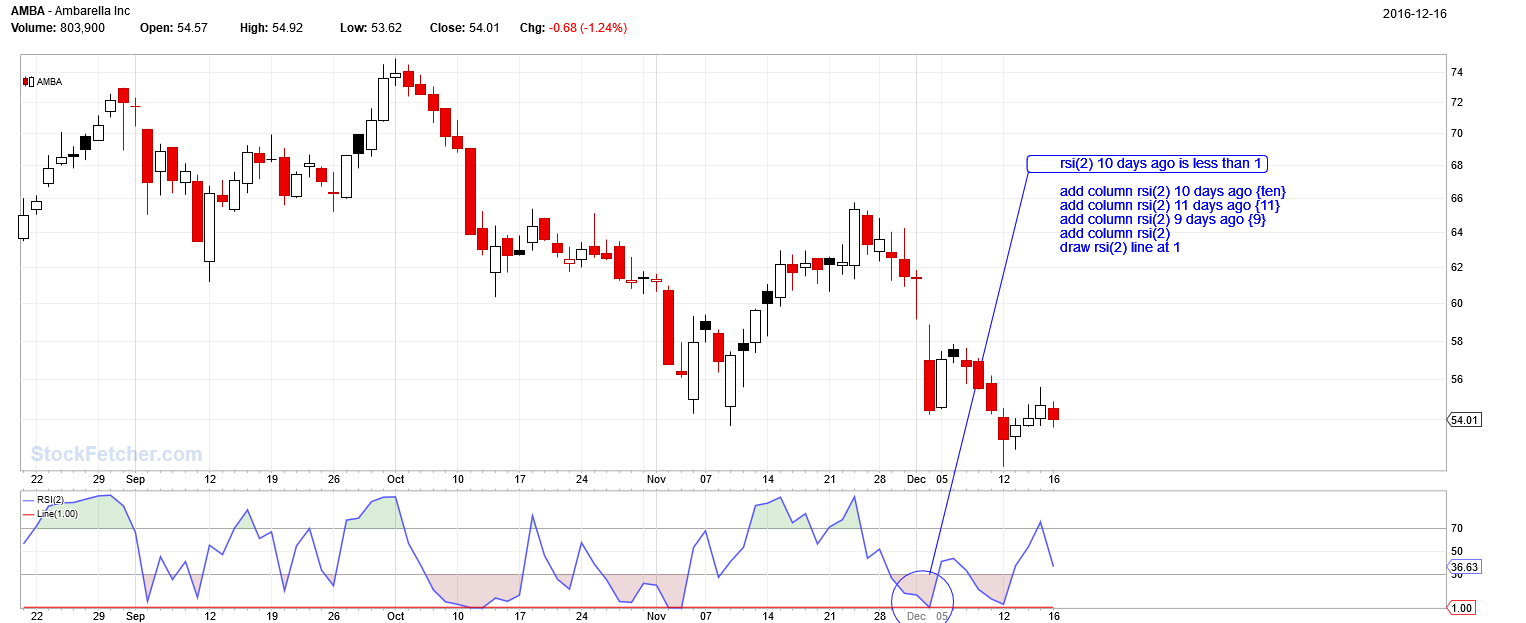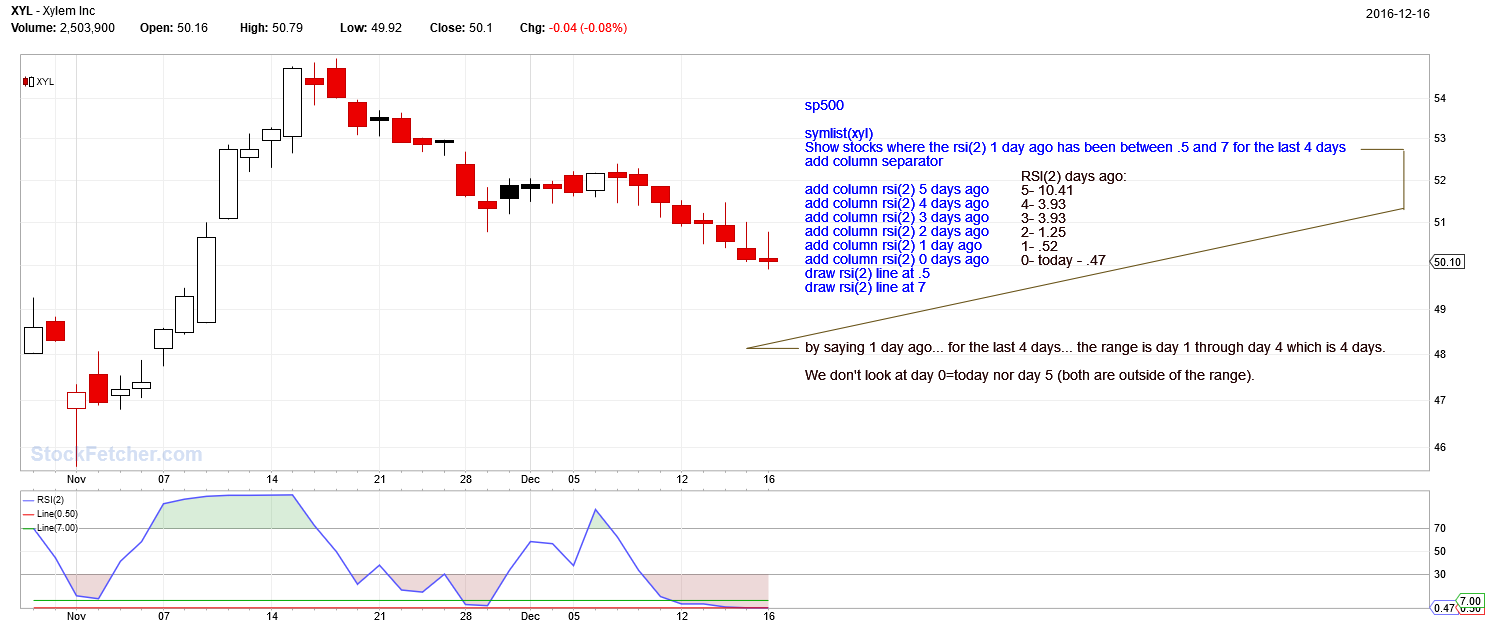| StockFetcher Forums · General Discussion · Is there an "if" | << >>Post Follow-up |
| starfox182 24 posts msg #100379 - Ignore starfox182 |
4/23/2011 6:18:31 AM How do I make my filter to screen something like this as an example: Price 250% gain in last 14 days then price 200% loss within those 14 days? |
| four 5,087 posts msg #100380 - Ignore four modified |
4/23/2011 7:24:29 AM The first ma(10) statement is a required gain and then the second ma(10) statement is a required drop. The 'lag 11' is to go into the past by 11 days for the first requirement. Then allowing the drop to occur in the last 6 days. Both actions occur in sequence and within 17 days (11 days + 6 days). Notice the ma(10) line goes up and then down. I believe you are looking for this pattern. Another... |
| starfox182 24 posts msg #100381 - Ignore starfox182 |
4/23/2011 7:40:37 AM Thank you so very much!!!!! :) |
| TheRumpledOne 6,529 posts msg #100420 - Ignore TheRumpledOne modified |
4/25/2011 6:37:01 PM |
| nibor100 1,102 posts msg #133272 - Ignore nibor100 |
12/18/2016 12:51:45 PM @ four While researching past posts for how to use the "lag" expression as described in the Yepher version of the user manual I ran across this old post of yours from 2011: "The first ma(10) statement is a required gain and then the second ma(10) statement is a required drop. The 'lag 11' is to go into the past by 11 days for the first requirement. Then allowing the drop to occur in the last 6 days. Both actions occur in sequence and within 17 days (11 days + 6 days). Notice the ma(10) line goes up and then down. I believe you are looking for this pattern. Submit Fetcher[ ma(10) gained more than 1.0 percent over the last 10 days lag 11 ma(10) dropped more than 0.5 percent over the last 6 days close > open close > 5 volume > 10000 high < ma(10) " I am interpreting lag 11 to mean to go in the past 11 days which would seem to result in stocks that have a 1% gain from 21 days ago thru 11 days ago and not the aforementioned 17 days ago thru 6 days ago, or am I missing something about the first line of the above filter? 2nd question do you have any idea why my test filter below doesn't apply the 10 day lag? rsi(2) is less than 1 lag 10 add column rsi(2) 10 days ago {ten} add column rsi(2) 11 days ago {11} add column rsi(2) 9 days ago {9} add column rsi(2) Thanks, Ed S. |
| four 5,087 posts msg #133273 - Ignore four modified |
12/18/2016 2:10:15 PM I believe what you want is accomplished with this filter (stick with "x days ago") : rsi(2) 10 days ago is less than 1 add column rsi(2) 10 days ago {ten} add column rsi(2) 11 days ago {11} add column rsi(2) 9 days ago {9} add column rsi(2) draw rsi(2) line at 1  |
| four 5,087 posts msg #133274 - Ignore four |
12/18/2016 2:47:58 PM Another example (working with a required range for RSI values):  |
| nibor100 1,102 posts msg #133287 - Ignore nibor100 |
12/19/2016 1:05:38 PM @four Sorry about the confusion, I wasn't looking for filter examples regarding "X days ago", as I am familiar with using that expression. I thought I had asked specific questions regarding the use of "lag X" as it seems to work in some filters and not in others and you had a past post using lag that still returns results. I was hoping I could use "lag X" instead of "X days ago" in order to save future typing and to make my filters easier to read. I appreciate the time you took to post those 2 suggested filters and I'll follow your advice to avoid using "lag X".. Ed S. |
| four 5,087 posts msg #133288 - Ignore four |
12/19/2016 1:12:03 PM welcome |
| StockFetcher Forums · General Discussion · Is there an "if" | << >>Post Follow-up |